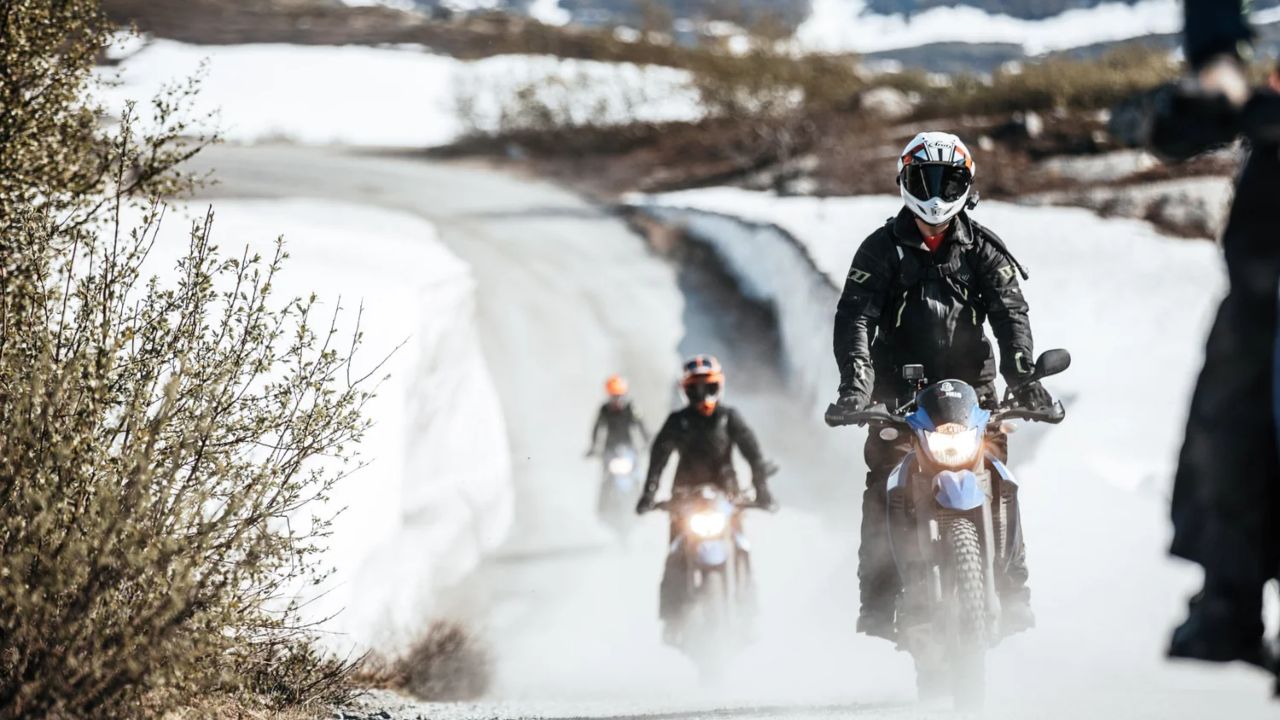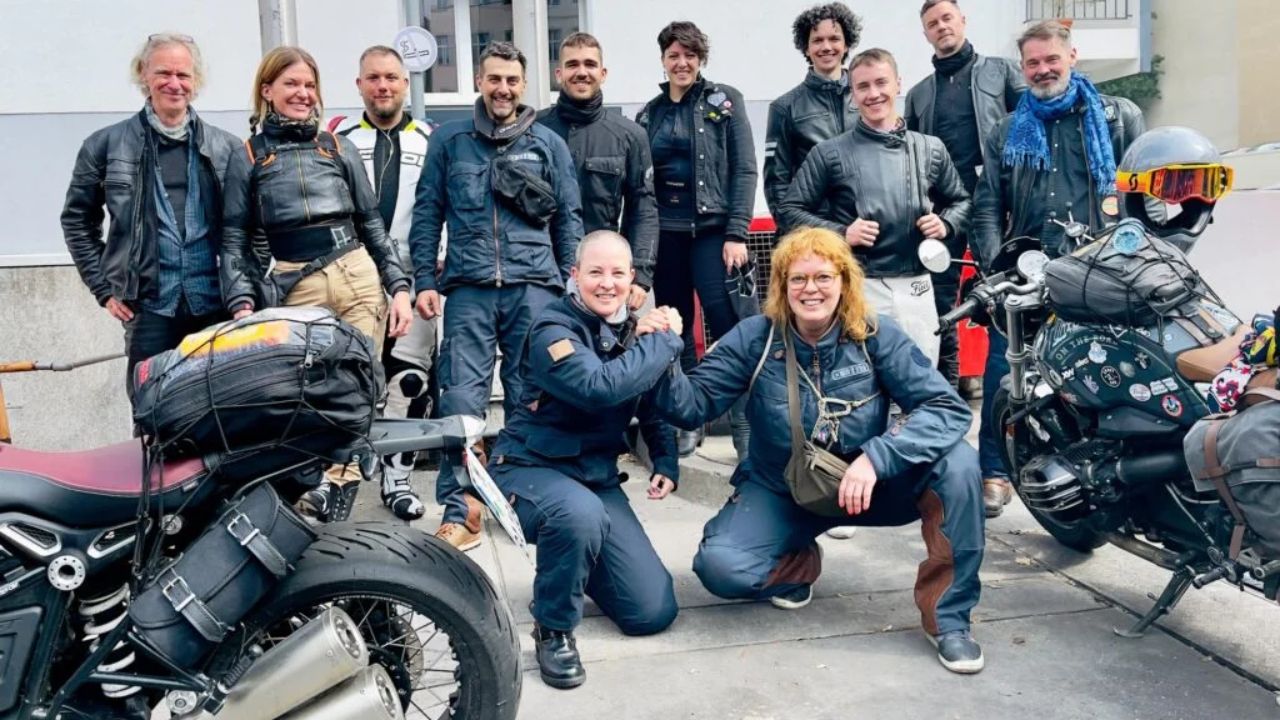
Everything You Need on a Winter Motorcycle Trip
Embarking on a winter motorcycle trip is an exhilarating way to experience the cold season from a new perspective. While winter offers stunning scenery and a quieter atmosphere, it also presents unique challenges, from unpredictable weather to freezing temperatures and slick roads. Preparation is key to making your winter ride enjoyable and safe. Let’s dive into everything you need to know, from selecting the right gear to handling icy roads like a pro.
Choosing the Right Motorcycle for Winter Riding
Your choice of motorcycle is fundamental for winter riding. Adventure or dual-sport bikes are often favored for cold-weather rides because they offer stability and better handling on rough or icy roads. Look for models with essential winter-ready features like anti-lock braking systems (ABS) and traction control to increase safety and stability on slippery surfaces. Engine size is also worth considering; mid-sized engines provide the right balance of power and control for winter conditions, especially if you’re likely to encounter snow or icy stretches.
Essential Winter Riding Gear
Winter riding demands gear that keeps you warm, dry, and fully protected from the elements. Layering is crucial—thermal layers retain heat, moisture-wicking fabrics manage sweat, and weatherproof outer layers keep out wind and precipitation. Here’s a breakdown of essential gear to ensure you’re covered for a cold-weather ride.
Motorcycle Jackets and Pants
A high-quality jacket and pair of pants can make all the difference on a winter ride. Textile materials are often better than leather for winter riding due to their lightweight nature, breathability, and insulation properties. Look for options with built-in thermal liners and waterproofing to protect against both cold and moisture. A well-insulated jacket with a high collar will protect your neck and chest from icy drafts, while reinforced pants with knee padding add warmth and security.
Heated Clothing Options
Heated gear is an excellent investment if you plan on spending extended periods on your bike in the cold. Battery-operated heated vests, gloves, socks, and jackets can keep you comfortable for hours. Some heated gear can be directly connected to your bike’s electrical system, ensuring consistent warmth throughout the ride. Just make sure your motorcycle’s battery is up to the task of supporting extra power for these gadgets.
Insulated Gloves and Hand Protection
Your hands are especially vulnerable to cold and can quickly lose feeling, affecting grip and control. Choose insulated, waterproof gloves specifically designed for winter motorcycling. Heated gloves are another option that can help maintain dexterity and grip. For added warmth, consider installing heated grips on your bike, as well as handguards to block cold wind.
Helmets and Balaclavas for Warmth
A full-face helmet is essential for winter riding, as it provides the most coverage and wind protection. A high-quality, well-ventilated helmet with an anti-fog visor is ideal for avoiding visibility issues. Pair it with a balaclava or thermal face mask for extra protection around your neck and chin, ensuring the wind stays out and warmth stays in.
Waterproof and Insulated Boots
Keeping your feet dry and warm is crucial in winter conditions. Insulated, waterproof boots with good grip and ankle support provide stability on wet or icy surfaces. Consider adding thick wool socks or electric boot warmers for extra insulation and warmth. Waterproofing sprays can also be helpful for additional protection against water seepage.
Preparing Your Motorcycle for Winter Riding
Winter weather takes a toll on motorcycles, so prepping your bike for the elements can help prevent cold-weather breakdowns. Here’s a checklist to keep your bike winter-ready.
Winter Tires and Tire Pressure
Winter tires with a deeper tread provide better traction on icy or snowy roads. In cold temperatures, tire pressure can decrease, which affects grip and stability. Check and adjust tire pressure regularly to ensure it’s at the optimal level for winter riding. Some riders opt for tire studs, which add extra grip on ice, but be sure to check local regulations before installing them.
Battery and Electrical System Check
Winter weather can put additional strain on your bike’s battery and electrical system. Make sure your battery is in top condition, as cold temperatures reduce battery efficiency. If you’re using heated gear, ensure your bike’s electrical system can handle the added load. A portable jump starter is also a smart backup for remote rides where battery failure could be hazardous.
Fluids and Winter-Ready Coolant
Switching to a winter-grade oil ensures your engine performs well in low temperatures. Similarly, check that your bike’s coolant has sufficient antifreeze to protect the engine. These simple yet effective maintenance steps can help prevent cold-weather issues and keep your motorcycle running smoothly throughout the season.
Route Planning and Weather Monitoring
A well-planned route can be the difference between a smooth, enjoyable ride and a dangerous journey. Always consider the weather forecast, road conditions, and route characteristics before heading out.
Avoiding Hazardous Routes
Winter conditions increase the risk of ice and snow accumulation, especially on shaded or high-elevation roads. Avoid routes known for frequent icy patches or low visibility, and look for roads that have been recently treated or plowed. Additionally, have alternative routes planned in case your primary route becomes impassable.
Using GPS and Navigation Apps
GPS devices and smartphone apps are incredibly useful for winter riding, providing real-time updates on road closures, weather conditions, and fuel stations. Apps like Waze or Google Maps can alert you to obstacles or delays, while dedicated motorcycle GPS devices can help plan stops for rest and refueling along the route.
Handling Challenging Road Conditions
Winter riding often means confronting slick or icy surfaces, so adapting your riding style is essential. Practicing smooth control over acceleration, braking, and turning can help reduce the risk of skidding or losing balance on icy roads.
Dealing with Black Ice and Slippery Surfaces
Black ice is particularly dangerous for motorcyclists due to its nearly invisible nature. Recognizing areas where black ice is common, such as shaded or bridge areas, can help you anticipate it. If you do encounter black ice, keep your steering steady, reduce your speed gradually, and avoid any sudden braking or accelerating.
Adjusting Riding Style for Winter Roads
On winter roads, gentle acceleration and braking are crucial. Use slower, wider turns and increase your following distance from other vehicles. This allows you more time to respond to any sudden changes in road conditions. Avoiding aggressive maneuvers will help keep you safe on challenging winter roads.
Staying Warm and Energized on the Road
Cold temperatures can sap your energy quickly, making it essential to stay warm, hydrated, and well-fed. Plan regular stops to stretch, grab a hot drink, and recharge. High-energy snacks and plenty of water will keep you fueled and focused. Staying hydrated is especially important, as dehydration can worsen the effects of cold exposure.
Emergency Preparedness and Safety Equipment
Winter conditions can lead to unexpected breakdowns or delays, so being prepared for emergencies is essential. Pack safety essentials and plan for communication and power needs in case of an unexpected stop.
Packing an Emergency Kit
Your emergency kit should include basics like a first-aid kit, flashlight, tire repair kit, and portable jump starter. Reflective gear, flares, or LED lights are helpful for making yourself visible if you’re stranded in low-light conditions. For winter, consider adding extra thermal blankets, hand warmers, and a few high-energy snacks.
Communication Devices and Power Banks
In winter’s remote or low-visibility areas, staying connected can be a lifesaver. Carry a fully charged mobile phone and a portable power bank to keep your devices ready. Satellite communication devices or emergency GPS beacons are also helpful for remote areas with weak phone signals, ensuring you can call for help if needed.
Conclusion
A winter motorcycle trip is a unique and rewarding experience, offering the chance to see the world from a quieter, frostier perspective. However, this type of riding comes with its own challenges and requires careful planning and preparation. From selecting the right bike and gear to checking your route and staying safe on icy roads, preparation is everything. With the right mindset and equipment, a winter ride can be an unforgettable adventure.




Leave a comment
This site is protected by hCaptcha and the hCaptcha Privacy Policy and Terms of Service apply.